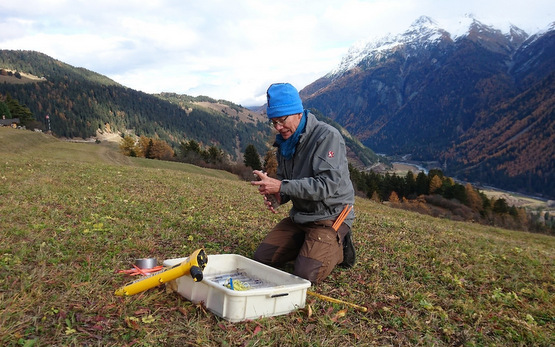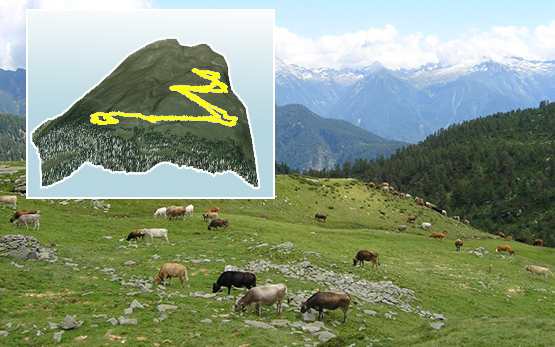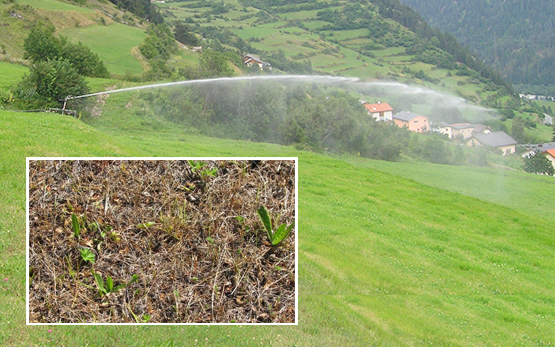The productivity of species-rich high-altitude grasslands and soil carbon stocks will evolve in response to the changing climate. Grassland agricultural forage production will thus come under threat, as will the carbon sinks absorbing greenhouse gases.
The Research Group’s work has already shown how the atmospheric pollutants ozone and nitrogen affect carbon storage in the mountain grassland ecosystem. However, changes in temperature and precipitation are also capable of producing extreme effects and reducing storage of the greenhouse gas CO2 in the soil (see ‘Publications’ below).
In the environs of the municipality of Sent in the Lower Engadine, and as part of the AlpESS Project, we are examining how modern irrigation options and the management approach can contribute to carbon storage. This will allow us to identify the best way to promote greenhouse-gas sinks and boost soil humus stocks.








